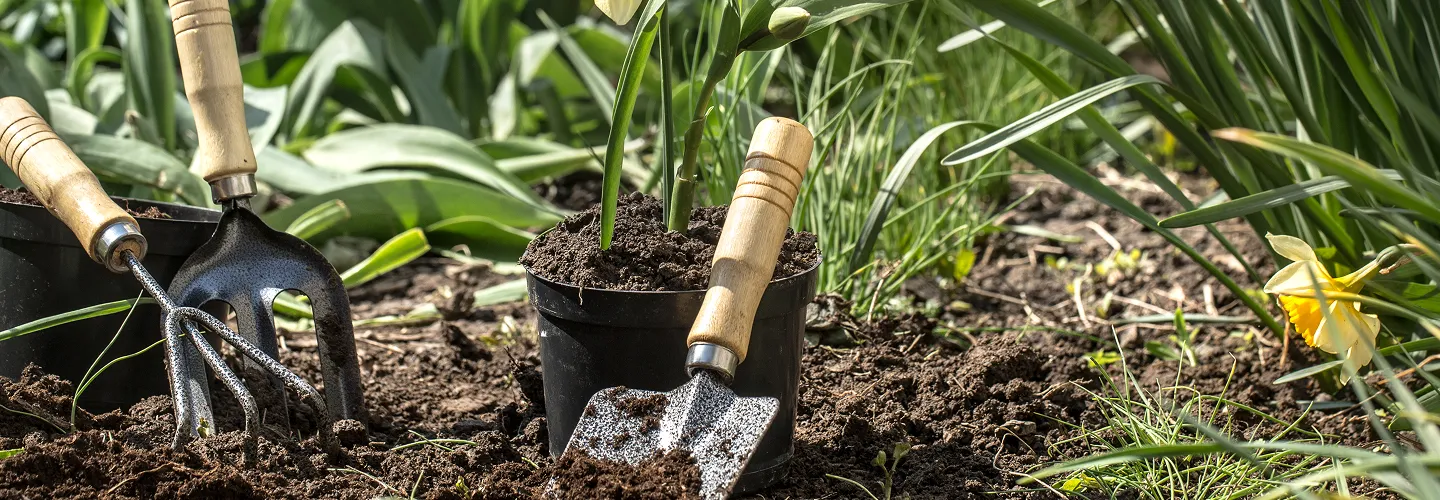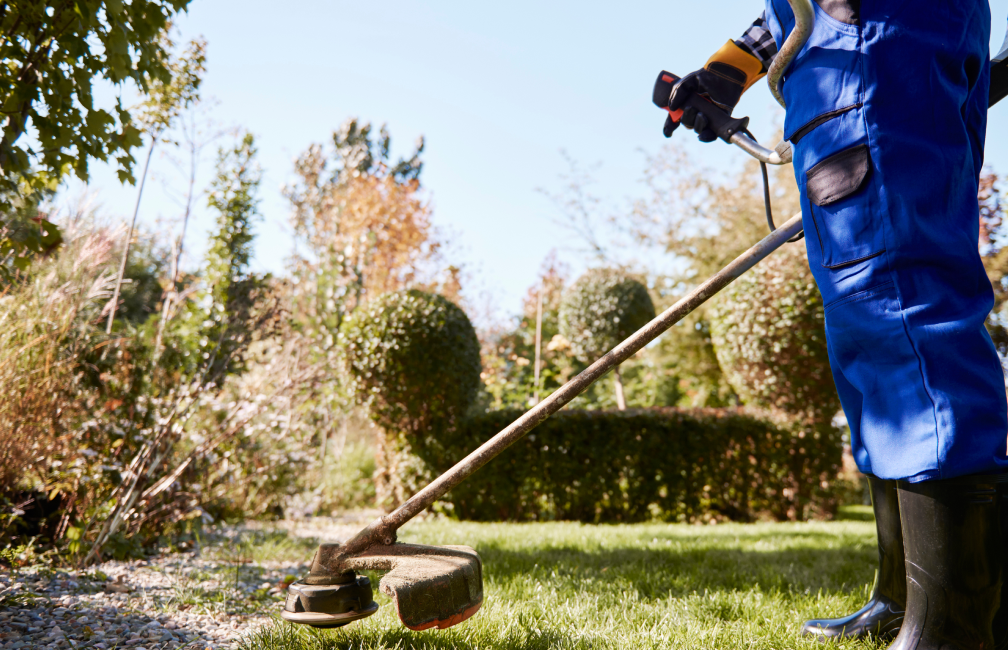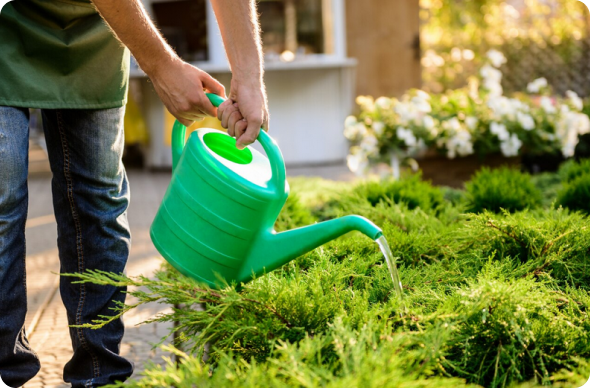
Norton Leaf Removal Services
Choose our leaf removal service for a hassle-free, thorough cleanup that keeps your yard healthy, beautiful, and ready for every season.
Get a Free QuoteWhen to Schedule Leaf Removal in Norton, MA – Seasonal Guide
In Norton, MA, the best times for leaf removal are typically late October through early December, and again in early spring before new growth begins. The town’s climate features cool autumns with frequent rainfall, and the first frost usually arrives in late October, signaling the start of peak leaf drop. Neighborhoods near Wheaton College and the Great Woods Conservation Area often experience heavier accumulations due to mature oaks and maples, while areas with more open lawns may see a faster cleanup process.
Local environmental factors such as high humidity, shaded yards, and clay-heavy soils can slow leaf decomposition, increasing the need for timely removal to prevent mold and protect turf health. Homeowners should also consider municipal guidelines and seasonal updates from the Town of Norton when planning their service.
Local Factors to Consider for Leaf Removal in Norton
- Tree density and species (oaks, maples, and pines drop leaves at different times)
- Proximity to wetlands or conservation land (increases leaf volume)
- Typical precipitation and risk of early frost
- Shade coverage and lawn exposure
- Soil type (clay soils retain moisture, increasing mold risk)
- Terrain and yard accessibility
- Municipal restrictions or scheduled pickup dates
Benefits of Leaf Removal in Norton

Enhanced Curb Appeal
Healthier Lawns
Prevention of Lawn Diseases
Time-Saving Service
Professional Equipment
Eco-Friendly Disposal

Norton Leaf Removal Types
Curbside Leaf Pickup
Full-Service Leaf Removal
Leaf Mulching
Seasonal Leaf Cleanup
Gutter Leaf Clearing
Bagged Leaf Collection
On-Demand Leaf Removal
Our Leaf Removal Process
Site Evaluation
Leaf Collection
Debris Removal
Final Inspection
Why Choose Norton Landscape Services

Norton Homeowners Trust Us
Expert Lawn Maintenance
Reliable Seasonal Cleanup
Competitive Pricing
Professional Team
Satisfaction Guarantee
Personalized Service
Contact Norton's Department of Public Works for Seasonal Leaf Collection & Curbside Pickup Schedules
Norton's Department of Public Works orchestrates comprehensive seasonal leaf collection throughout the town's distinctive residential communities from mid-October through early December, serving this historic Bristol County municipality where agricultural heritage intersects with academic excellence and entertainment venues while maintaining critical multi-watershed protection responsibilities. The town's leaf management program employs systematic collection methodologies designed to handle substantial organic debris volumes across Norton's diverse landscape, accommodating both Wheaton College campus areas and rural properties requiring specialized routing strategies.
Collection activities operate through methodical territory-based routing that ensures complete coverage across Norton's residential districts, from concentrated village areas near the Xfinity Center to dispersed agricultural properties requiring extended service coordination. The department publishes detailed collection schedules on the municipal website with regular updates reflecting seasonal conditions and weather-related modifications throughout the autumn cleanup period.
- Territory-based collection methodology: Systematic coverage accommodating Norton's extensive agricultural geography and diverse property configurations including college campus areas
- Biodegradable bag requirements: Paper bag mandate supporting municipal composting and cranberry bog watershed protection objectives
- Academic community coordination: Collection procedures addressing Wheaton College campus characteristics and student housing considerations
- Multi-watershed stewardship: Operations supporting Canoe River, Rumford River, and Taunton River system protection
Residents must position biodegradable paper bags curbside no earlier than sunset the evening before scheduled pickup and no later than 7:00 AM on collection day, maintaining minimum distances of twelve feet from storm drainage infrastructure, fire hydrants, and utility installations to ensure safe operations while protecting Norton's numerous cranberry bogs and multi-watershed systems throughout the collection season.
Norton's Transfer Station provides supplementary disposal capacity with expanded weekend operating hours during peak season, accepting both bagged materials and loose leaves from residents with current permits along with brush and agricultural property maintenance debris from comprehensive fall cleanup activities.
Norton Department of Public Works
70 East Main Street, Norton, MA 02766
Phone: (508) 285-0275
Official Website: Norton Department of Public Works
Understanding Leaf Accumulation Impact on Norton's Bristol County Cranberry Bog & Agricultural Transition Soil Conditions & Lawn Health
Norton's extraordinary agricultural landscape encompasses diverse glacial formations and cranberry bog-influenced areas that create highly specialized soil conditions significantly affecting leaf accumulation impacts on residential turf throughout the fall season. The town's geological foundation includes excessively drained Hinckley and Windsor series sandy soils on outwash plains, well-drained Paxton and Charlton series on drumlin uplands, fertile Hadley series alluvial deposits along river corridors, and very poorly drained Freetown muck in cranberry bog margins and wetland areas, forming an intricate pattern of drainage characteristics across different agricultural and academic zones.
These Bristol County glacial outwash and till formations produce growing environments where the town's cranberry bog industry and agricultural heritage have created unique soil chemistry and moisture patterns that significantly affect organic matter decomposition rates and turf response throughout different property areas.
- Excessively drained agricultural outwash: Hinckley and Windsor series preventing waterlogging while creating nutrient leaching challenges, tolerating leaf coverage for 21-28 days under optimal conditions
- Well-drained drumlin uplands: Paxton and Charlton series providing moderate leaf tolerance for 14-21 days under favorable conditions
- Cranberry bog-influenced soils: Acidic conditions and seasonal flooding creating rapid turf damage within 5-7 days due to poor drainage and chemical stress
- River valley agricultural deposits: Fertile Hadley series creating accelerated decomposition and rapid turf damage within 7-10 days during wet periods
Heavy leaf accumulation on Norton's cranberry bog-adjacent properties creates accelerated damage patterns within five to seven days due to acidic soil conditions and seasonal water table fluctuations, while well-drained agricultural uplands may tolerate coverage for extended periods depending on specific soil characteristics and seasonal precipitation patterns.
Norton Conservation Commission Guidelines for Leaf Disposal Near Wetlands & Protected Areas
Norton encompasses extraordinary protected natural resource diversity reflecting its position within multiple watershed systems and its distinction as home to extensive cranberry bog operations, requiring comprehensive leaf management coordination near sensitive ecosystems distributed throughout residential neighborhoods. The town contains portions of the Canoe River system, Rumford River watershed, extensive cranberry bog complexes, Lake Winnecunnet, numerous freshwater marshes, and conservation areas providing essential habitat and agricultural water management functions.
The town's protected resources include both natural formations and cranberry bog cultivation areas that create comprehensive regulatory requirements affecting residential leaf management throughout significant portions of the community adjacent to these regionally important agricultural and natural systems.
- Canoe River watershed corridors: Regional waterway with comprehensive buffer zone requirements and Taunton River system significance
- Cranberry bog ecosystem networks: Active and inactive cultivation areas extremely sensitive to nutrient loading and organic matter disruption affecting agricultural operations
- Lake Winnecunnet recreation area: Significant water body requiring nutrient loading prevention and recreational water quality maintenance
- Agricultural conservation interfaces: Protected areas supporting both farming operations and wildlife habitat preservation
Norton Conservation Commission
70 East Main Street, Norton, MA 02766
Phone: (508) 285-0275
Official Website: Norton Conservation Commission
The Conservation Commission implements buffer zone requirements under the Massachusetts Wetlands Protection Act affecting residential properties throughout the town, particularly areas adjacent to extensive cranberry bog systems and multi-watershed networks characteristic of this Bristol County agricultural landscape.
Keep Leaves Out of Streets & Storm Drains: Norton's MS4 Stormwater Compliance Requirements
Norton's stormwater management program operates under stringent federal regulations protecting multiple watershed systems including the Canoe River, Rumford River, and broader Taunton River network, regionally significant waterways supporting diverse aquatic communities and flowing through southeastern Massachusetts communities toward Mount Hope Bay and Narragansett Bay marine environments. The town's Municipal Separate Storm Sewer System permit under the Clean Water Act and EPA NPDES program mandates comprehensive organic debris prevention protecting downstream water quality.
The town's storm drainage network serves agricultural, academic, and residential developments while discharging into multiple watershed tributaries that provide aquatic habitat and agricultural water supply functions throughout the regional system extending toward marine environments in southeastern Massachusetts.
- Multi-watershed stewardship: Canoe River, Rumford River, and Taunton River systems requiring comprehensive organic debris prevention and regional coordination
- Cranberry bog water quality: Active cultivation areas requiring protection from organic matter pollution affecting agricultural productivity
- Academic campus coordination: Wheaton College area drainage requiring coordination with educational facility environmental standards
- Mount Hope Bay marine connection: Ultimate receiving waters supporting commercial fisheries and recreational activities throughout southeastern Massachusetts
U.S. Environmental Protection Agency, Region 1
5 Post Office Square, Boston, MA 02109
Phone: (617) 918-1111
Official Website: U.S. Environmental Protection Agency, Region 1
Decomposing leaves in Norton's agricultural stormwater systems create environmental concerns due to the combination of organic matter breakdown and cranberry bog sensitivity to nutrient inputs, creating excessive loading in waterways supporting both agricultural operations and sensitive fisheries populations throughout the regional watershed system.
Norton's Implementation of Massachusetts Organic Waste Diversion Requirements for Fall Leaves
Norton addresses Massachusetts organic waste diversion mandates under Massachusetts General Law Chapter 111, Section 150A through agricultural community programs that efficiently manage substantial organic waste volumes while serving diverse residential, academic, and farming developments with comprehensive environmental stewardship objectives reflecting the town's cranberry bog heritage and conservation commitment.
The municipal composting operation transforms collected organic matter into soil amendments particularly valuable for Norton's challenging agricultural growing conditions, creating beneficial cycles where leaf waste becomes essential resources addressing both cranberry bog soil management and residential landscape needs throughout the community's unique agricultural landscape.
- Agricultural community integration: Processing programs coordinated with cranberry bog operations and traditional farming soil management practices
- Academic institution coordination: Processing methods accommodating Wheaton College campus organic waste and educational sustainability initiatives
- Cranberry bog soil enhancement: Compost production addressing acidic soil conditions and specialized agricultural amendment needs
- Multi-watershed protection integration: Processing ensuring prevention of organic matter contamination in multiple river systems and bog operations
Massachusetts Department of Environmental Protection
1 Winter Street, Boston, MA 02108
Phone: (617) 292-5500
Official Website: Massachusetts Department of Environmental Protection
Massachusetts Department of Agricultural Resources
251 Causeway Street, Boston, MA 02114
Phone: (617) 626-1700
Official Website: Massachusetts Department of Agricultural Resources
Optimal Leaf Removal Timing for Norton's Tree Species & New England Fall Weather Patterns
Norton's diverse agricultural and academic forest canopy incorporates both cranberry bog windbreak plantings and extensive campus specimen trees, creating complex leaf drop sequences requiring strategic timing coordination with municipal collection services throughout the extended fall season. The community's tree populations include agricultural boundary trees, Wheaton College campus varieties, and native woodland species contributing to prolonged cleanup requirements from early October through late November.
- Early October: Sugar maples and cranberry bog windbreak species initiate major leaf shedding throughout agricultural and campus areas
- Mid-October: Red maples and Wheaton College ornamental varieties enter intensive drop phases requiring coordinated collection response
- Late October: White oaks and red oaks reach peak volume periods demanding systematic removal efforts across all property types
- November: American beech and persistent agricultural boundary species continue shedding requiring sustained collection activities
Coordination with National Weather Service Boston forecasts helps optimize collection timing by scheduling pickup following major drop events while avoiding removal immediately before heavy precipitation that creates matted conditions and potential runoff into cranberry bog systems and other watershed areas.
Post-Leaf Removal Lawn Recovery & Winter Preparation in Norton's Climate Zone
Norton's agricultural environment creates distinctive lawn recovery requirements following comprehensive leaf removal, with cranberry bog influences, diverse drainage patterns, and academic community proximity requiring specialized approaches to turf restoration and winter preparation throughout the community.
- Cranberry bog soil management: Recovery strategies addressing acidic soil conditions and seasonal water table fluctuations near bog operations
- Agricultural soil coordination: Restoration practices addressing enhanced fertility levels and diverse soil conditions across farmland and residential properties
- Academic campus integration: Recovery programs coordinating with Wheaton College landscape management and educational sustainability objectives
- Multi-watershed protection: Recovery practices preventing nutrient runoff into Canoe River, Rumford River, and cranberry bog systems
University of Massachusetts Extension Center for Agriculture, Food and the Environment
161 Holdsworth Way, Amherst, MA 01003
Phone: (413) 545-4800
Official Website: University of Massachusetts Extension
What Neighborhoods Do We Serve Throughout Norton, MA?
Norton Center Village encompasses the town's historic core with traditional New England architecture surrounded by agricultural heritage properties and established residential neighborhoods creating substantial leaf volumes requiring coordinated collection while maintaining village character and academic community accessibility.
Wheaton College Campus District features the distinguished liberal arts college with exceptional specimen tree coverage, academic landscaping, and student housing areas requiring specialized collection coordination addressing both educational facility needs and residential neighborhood integration throughout the fall season.
Xfinity Center Entertainment Complex includes mixed residential and commercial development surrounding this major regional venue with mature landscaping, traffic coordination requirements, and specialized collection timing addressing both residential needs and entertainment facility operations during peak fall concert seasons.
Cranberry Bog Agricultural Areas encompass active and inactive bog cultivation zones with comprehensive agricultural water management systems, specialized soil conditions, and environmental protection requirements creating unique collection challenges due to both agricultural operations and sensitive wetland ecosystem preservation throughout the fall season.
Lake Winnecunnet Recreation District presents waterfront residential development adjacent to this significant recreational water body with mature specimen trees, comprehensive environmental protection requirements, and unique collection challenges due to both water quality protection needs and high leaf volumes from lakeside forest coverage.
Canoe River Corridor Properties include residential development along this regionally significant waterway with streamside vegetation, comprehensive watershed protection requirements, and specialized collection challenges due to both environmental compliance needs and substantial leaf volumes from riparian forest coverage throughout the fall cleanup period.
Agricultural Heritage Farmstead Areas encompass traditional farming properties with heritage windbreak plantings, larger lot configurations, and extensive native forest coverage generating substantial leaf volumes while maintaining the rural agricultural character that defines Norton's identity and supports regional food production systems.
Norton Municipal Bylaws for Leaf Blowing Equipment Operation & Noise Control
Norton's noise control regulations establish practical guidelines for powered equipment operation throughout the town's agricultural and academic residential neighborhoods, recognizing both effective leaf management needs and quality of life considerations for residents across varied community settings including college campus areas and farming operations.
The bylaws accommodate Norton's extensive geographical diversity and varied neighborhood characteristics while maintaining appropriate standards for community livability and environmental quality throughout residential areas with different development patterns, agricultural operations, and proximity to sensitive cranberry bog and wetland resources.
- Monday through Friday: 7:00 AM to 6:00 PM for gas-powered leaf blowing equipment operation across all residential zones
- Saturday: 8:00 AM to 5:00 PM with enhanced consideration for weekend activities and cranberry bog operation coordination
- Sunday and holidays: Restricted operation hours from 9:00 AM to 4:00 PM for essential maintenance activities only
- Agricultural and academic coordination: Flexible enforcement addressing farming operation schedules, Wheaton College campus needs, and Xfinity Center event considerations
Commercial landscaping contractors operating in Norton must maintain current municipal permits and comprehensive liability insurance coverage for all leaf removal services, with additional requirements addressing both agricultural working conditions and environmental protection coordination throughout the town's diverse residential, academic, and conservation areas.
Norton Building Department
70 East Main Street, Norton, MA 02766
Phone: (508) 285-0275
Official Website: Norton Building Department
Gas-powered equipment must comply with EPA emission standards and noise level restrictions appropriate for agricultural-academic residential environments, with enforcement procedures addressing neighbor complaints and maintaining community livability standards while accommodating the town's cranberry bog heritage, college campus operations, and diverse property characteristics throughout this distinguished Bristol County community.